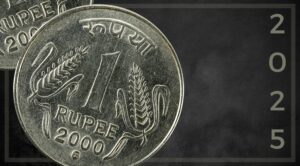The Turkish Lira (TRY) has long been expected to have a difficult 2025. But few market participants could have anticipated this year would also include the outbreak of political turmoil that would send the lira to record lows against the US dollar (USD).
Last month, the Turkish authorities moved to arrest the Mayor of Istanbul, Ekrem Imamoglu, in a move that is widely considered to be an attempt to sideline President Recep Tayyip Erdogan’s main rival. The authorities in Istanbul have accused Imamoglu of leading a criminal organisation engaged in activities such as bribery, embezzlement, and fraud. They have also claimed that Imamoglu has hired individuals associated with the terrorist Kurdistan Workers’ Party (PKK).
The timing of these developments made its true motivation fairly obvious for most to see. Imamoglu’s arrest unfolded just days before he was set to be officially nominated as the Republican People’s Party candidate for the 2028 presidential election. His arrest sparked massive protests in Istanbul and other major cities in Turkey, with hundreds of thousands of Turks taking to the streets to demand his release.
The political instability which broke out had an immediate impact on financial markets, including on foreign exchange markets, where the US dollar (USD) has now strengthened by more than 3% against the Turkish lira (TRY) since the protests broke out, and by than 7% since the start 2025. During the protests, the Turkish lira fell as much as 12.7% against the dollar and, at one point, hit an all-time low of 42 to the dollar.
The Borsa Istanbul stock exchange index declined by as much as 16% in the aftermath of Imamoglu’s arrest. Yields on Turkish ten-year government bonds soared past 31%, its highest level since 2010, to reflect higher risk.
The Borsa Istanbul stock exchange index declined by as much as 16% in the aftermath of Imamoglu’s arrest. Yields on Turkish ten-year government bonds soared past 31%, its highest level since 2010, to reflect higher risk.
This morning, popular Istanbul Mayor & Pres. Erdogan's main political rival Ekrem Imamoglu was ARRESTED by Turkish authorities.
— Steve Hanke (@steve_hanke) March 19, 2025
The lira TANKED 12.7% vs. the USD & reached an ALL-TIME LOW of 42/USD before bouncing back to 37.7/USD.
ERODGAN'S TURKEY = NO OPPOSITION = NO PROBLEM. pic.twitter.com/fQ5RFuW84Q
Even before this outbreak of political instability, many global investment banks had been predicting that 2025 would be a tough year for the Turkish lira. In October last year, Morgan Stanley predicted that the USD/TRY rate could be as low as 45 by the end of 2025. Deutsche Bank suggested at the start of the year that the lira would trade at 43 to the dollar by year-end, while S&P Global had the lira slightly stronger at 42.
The main reason for this bearishness is that many predict the Turkish central bank to start loosening monetary policy considerably this year after a series of interest rate hikes. Indeed, in March, the central bank lowered its benchmark interest rate by 2.5% in its third consecutive cut after official data showed inflation dipping below 40% for the first time in almost two years. Morgan Stanley believes that by mid-2025, the interest rate will be down to 35%.
While lower interest rates can help stimulate greater amount of economic activity, there is a risk that these cuts will prove premature, and that Turkey could face higher levels of inflation.
Last year, the International Monetary Fund (IMF) estimated that inflation in Turkey would fall to 24% by the end of this year – but this was contingent on the central bank continuing to implement tighter monetary policy. A renewed bout of inflation would likely undermine the Turkish lira by weakening the currency’s purchasing power and therefore potentially weakening its value relative to other major currencies.
Professor Ayca Cubukcu discusses how #Turkey's economic crisis, with soaring #inflation and the devaluation of the Turkish Lira, has led to widespread poverty and unrest, fueling the determination of people taking to the streets. #Economy #GNT pic.twitter.com/170aImG6KT
— Al Arabiya English (@AlArabiya_Eng) March 26, 2025
There are other, more long-term factors which have put the lira under pressure for several years now. Turkey has a chronic current account deficit as it relies heavily on energy and raw materials imports – although this deficit narrowed to $10 billion in 2024 – which has served to weaken the lira. The country also has a massive pile of external dollar-denominated debt, surpassing $500 billion last year, which creates strong demand for the dollar and weakens the value of the lira relative to the greenback.
Emerging market currencies more widely are likely to be under pressure in 2025 given widespread expectations of a stronger US dollar. Goldman Sachs have predicted that the dollar will appreciate by around 5% throughout the course of the year, with JP Morgan also believing the greenback will strengthen. This is as a result of Trump’s tariffs leading to higher inflation in the US and therefore requiring the Federal Reserve to maintain an environment of tighter monetary policy.
It remains to be seen how long the political crisis in Turkey will last, or the extent to which disorder will break out. A prolonged period of instability would likely undermine further a lira which is already under severe pressure – and see the currency plunge to new record lows.
Author: Harry Clynch
#Turkey #TurkishLira #TRY #ForeignExchange
See Also:
Why Is Economic Growth Slowing In Turkey? | Disruption Banking
Turkey Returns $5bn Deposit To Riyadh As Economic Reforms Yield Results | Disruption Banking
Election Results Raise Markets’ Hope Of Economic Recovery In Turkey | Disruption Banking















